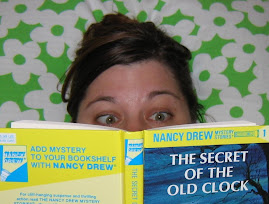Sones, Sonya. 2001. What My Mother Doesn’t Know. New York: Simon & Schuster Books for Young Readers. ISBN 0-689-84114-0
Plot Summary
Fourteen year old Sophie is dealing with her parents’ troubled marriage, and her own confusing romantic life. The one constant in Sophie’s life is her relationship with her two best friends, but even they don’t know about her secret crush on the class loser. When her friends go on vacation over the winter break, Sophie’s feelings for Murphy quickly move beyond the crush stage, and she struggles with what to do when school is back in session.
Critical Analysis
What My Mother Doesn’t Know is a novel told in verse form. The story is told in a very linear fashion, with most poems illustrating an event in the main character’s life, similar to chapters in a standard novel, or entries in a journal. A few of the poems serve to give background information on the character, such as the story of how the girls became best friends in “It’s Been Rachel, Grace and Me Ever Since.” While each poem could stand alone, they work best as part of the overall novel.
This novel is all about Sophie’s emotions, which are sometimes a roller coaster. In “Deleted” and “Chat Room Chump”, Sophie’s emotions go from shock, disgust, anger and fear. In the following “When I Tell Them”, her best friends share in these emotions, and allow Sophie to move on. The most powerful poems in the novel deal with her romantic feelings for boys, and the passion Sophie feels is almost tangible, as “In the Movie Theater” shows:
Robin whispers something to me,
and when his lips
brush against my ear,
all the atoms in my body
start vibrating,
as though I’m a harp
and every single one
of my strings
has just been plucked
at the exact same time.
I don’t catch what he says.
But it doesn’t matter.
And when our fingers bump
in the popcorn box,
a shower of sparks flies out.
But while Sophie is clear and honest about many events, she is less so about the feelings brought out by her parents. Her father is cold, and her mother is distant and depressed. Sophie briefly touches on her feelings, but tends to shy away from too much introspection concerning her parents. This is an area of her life that is painful, but has been so as long as she can remember, and while there are occasional bright spots, there isn’t much room for hope.
The poems in this novel are free verse, and each poem has its own form. Most poems follow a pattern of verse size, for example three lines for each verse, or alternating three line and five line verses. Some of the poems use a standard verse size, and then end with one line for added emphasis.
Review:
“The poetry is never pretentious or difficult; on the contrary, the very short, sometimes rhythmic lines make each page fly. Sophie's voice is colloquial and intimate, and the discoveries she makes are beyond formula, even while they are as sweetly romantic as popular song. A natural for reluctant readers, this will also attract young people who love to read. “ -- Booklist, November 15, 2001, Copyright American Library Association
Connections:
This novel will appeal to most young adults, and while it is an easy, fast read, it is an excellent example of how poetry uses the fewest words to convey the most meaning, as well as the idea that poetry does not have to be lofty verses about nature. Students can use this novel as a starting point for their own free verse poetry, based on experiences meaningful in their lives.
What My Girlfriend Doesn’t Know picks up where this novel leaves off, and is written from the perspective of Sophie’s boyfriend, Robin.
*****
Reviews found at the Carrollton Public Library website, http://cityofcarrollton.com/library/

No comments:
Post a Comment